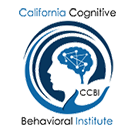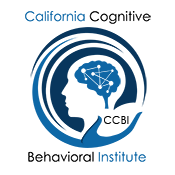A look at the traumatized brain, and how you can start to heal. What to know by Kathie Mathis, Psy.D, D.D., NCP, CAMS-IV, CDAC, CBIF, CLC, CPI, CDAC
Trauma destroys the human spark that resides in moments or acts that occur within a social context: communication, speech, autobiographical remembrance, dignity, peace, and freedom.
Trauma subsists through the abnormal coding of memories. Conscious recollection of the past has become impossible. An “as if” re-enactment of the past becomes a piece of the present which is too terrible to utter aloud.
Traumatized individuals become “stuck” in the horror they experienced and endured. These traumatic memories take center stage in one’s life and dominate, are intrusive and continue to make survivors live in fear, feel tormented, and behave as if an ongoing threat still endangers them. At the core of psychological trauma is confusion of past and present. This may create a “reality” that seems more real than the actual reality. Survivors with TSD (traumatic stress disorder) have never caught up to the present. They have not arrived to the “now” resulting in the alienation of the soul which is wounded and has soul trauma.
This severe pain and harm that is purposefully inflicted by one person towards another creates a “soul storm” with trauma reactions like dissociation, cognitive dissonances, mental aberrations, PTSD, and other adverse reactions.
Trauma destroys, isolates, and freezes the flow of one’s personal biography.
- Throughout life, the brain grows and evolves. Survivors of trauma can use this plasticity ability to help them heal.
- The brain tends to experience excessive activation in areas related to fear.
- Thinking areas are also reduced in activation ability.
- Therapy and mindfulness can reduce activation in the fear center and allow for healthy emotional expression.
Research tells us that approximately 50 percent of the population (ncbi.nim.nih.gov?pubmed/7492257) will experience an event with trauma at some point in their lives. While reactions to trauma can vary widely, and not everyone will develop PTSD (post-traumatic Stress Disorder. However, trauma can change the brain in some predictable ways that everyone should be aware of. With increased awareness, you can be on top of healing and to seek treatment to address your symptoms and learn skills that could actually rewire your brain for recovery.
Some of my clients think that they are “crazy”, “broken”, and “bad.” But that is not true – knowing what’s going on can be immensely helpful because it may help you realize that you’re not crazy, broken and bad. Instead, you can think of a traumatized brain as one that functions differently as a result of traumatic events and is “plastic” and there can be changed in response to your past experiences with the world, response to the world, and improve future experience reactions, because you can change your brain.
3 Areas to Know About to help you heal
Trauma has three areas where the most important changes appear to occur:
- The prefrontal cortex (PFC), the “Thinking Center”
- The anterior cingulate cortex (ACC), the “Emotion Center”
- The amygdala, known as the “Fear Center”
Why is it important for us to know these 3 areas?
The thinking center, is located near the top of your head, behind your forehead. It’s responsible for abilities including rational thought, problem-solving, planning, decision making, empathy, and awareness of self and others. When this area of the brain is strong, we are able to think clearly, make good decisions, and be aware of ourselves and others.
The emotion regulation center, is located next to the prefrontal cortex but deeper inside the brain. This area is responsible (in part) for regulating emotion, and (ideally) has a close working relationship with the thinking center. When this region is working properly, we are able to manage difficult thoughts and emotions effectively. While we might want to send a snarky email to a coworker, the emotion regulation center reminds us that this is not a good idea so that we don’t do things we regret.
The amygdala, a tiny structure deep inside our brain, is the fear center. This area is outside of our conscious awareness/control and its primary job is to receive all incoming information—what you see, hear, touch, smell, and taste—and answer one question: “Is this a threat?” If it determines that a dangerous threat is present, it produces fear when activated, and we feel afraid, reactive, and very vigilant.
Traumatized brains look different from non-traumatized brains in 3 predictable ways:
- The Thinking Center is underactivated.
- The Emotion Regulation Center is underactivated.
- The Fear Center is overactivated.
A traumatized brain often is “bottom-heavy,” meaning that if you are traumatized, you may experience chronic stress, vigilance, fear, and irritation. You may also have a hard time feeling safe, calming down, sleeping or more. These symptoms are all the result of an hyperactive amygdala.
At the same time, individuals who are traumatized may notice difficulties with focus and concentration/attention, and often report they can’t think clearly. This is due to the thinking center being under-activated.
Sometimes trauma survivors will complain that they feel incapable of managing their emotions. For example, if someone reminds them of someone who hurt them, scared them, etc., they may experience a rapid heart rate long after the event is over, or may have a hard time “just letting go” of minor annoyances and build up anger responses and even cry as a response. Even when they want to calm down and feel better, they just can’t. This is in large part due to a weakened emotion regulation center.
Practice makes Progress!!
Changing the brain takes effort, repetition, and time. Remember that practice makes progress.
The best gift you can give yourself toward this goal is psychotherapy and emotional regulation work. (look for a psychologist or therapist who specializes in trauma and PTSD, and who uses evidence-based methods that change the brain by working with both the body and the mind). Also find a laughter coach/therapist to add the powerful brain healer and body healer called laughter to your healing program.
Also, consider adding a body-based and mindfulness program which teaches techniques for you to add to your daily routine, to help begin deactivating the fear center. This is a vital first step to healing. Two such exercises include diaphragmatic breathing and autogenic training.

